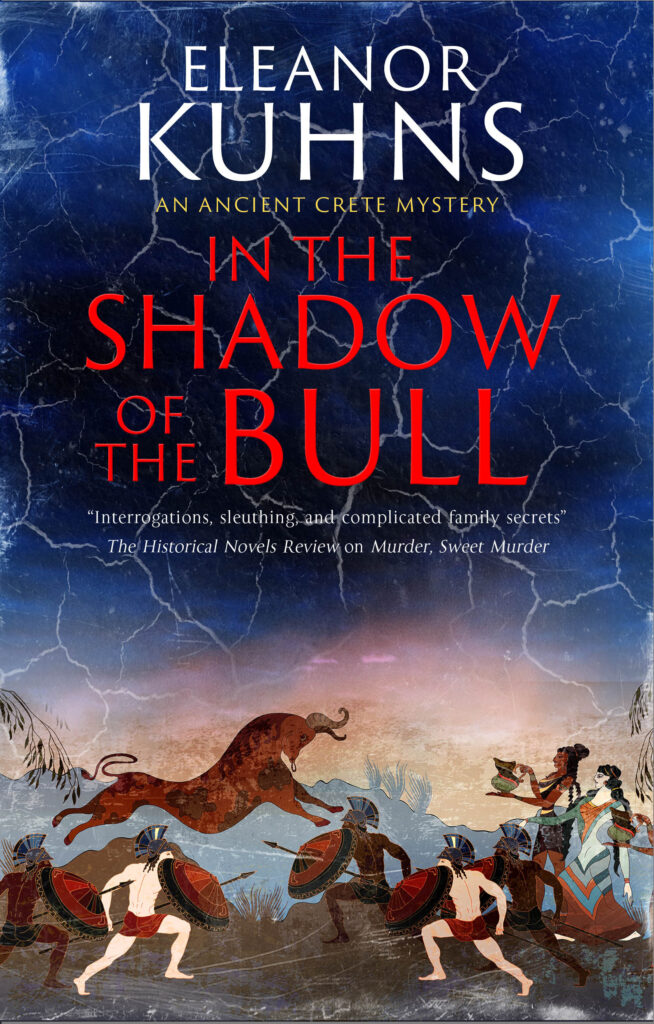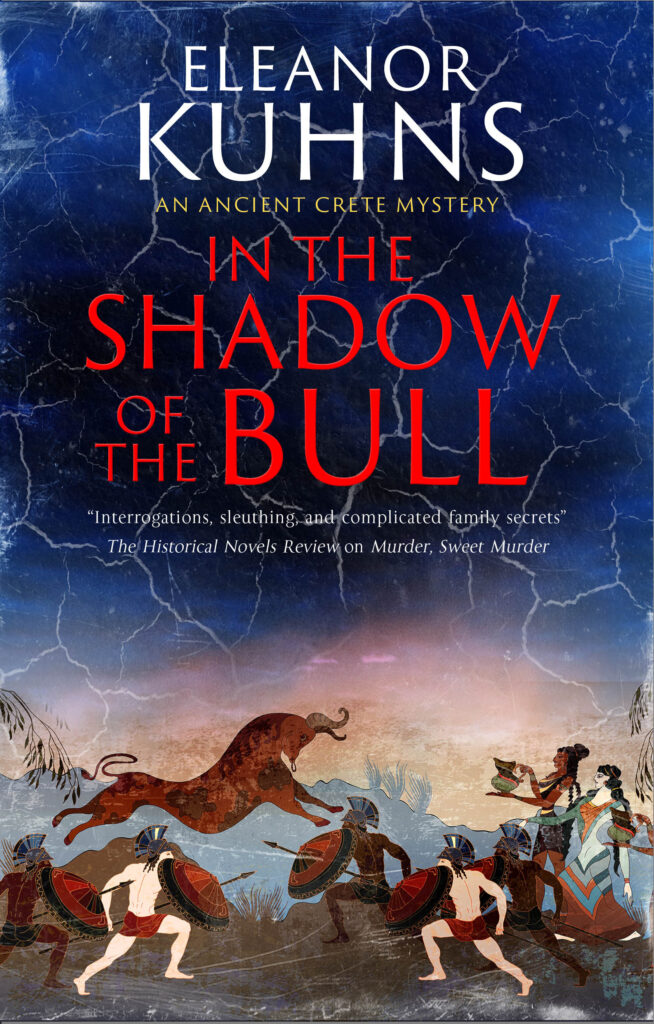Is there a kernel of truth to the legend of the Minotaur? We already know there are many theories regarding the location of a labyrinth as described in the Greek myth. One theory mentioned previously is the complicated floor plan of the Knossos palace complex. Many of the Achaeans, the early mainland Greeks, would have come from halls with much fewer rooms so it is possible they saw the complicated and many roomed palace and were overwhelmed.
. A fragment of a floor with a labyrinth has been found during the excavation at Knossos. Was it decoration? Or something more? No one knows.
Or perhaps the maze as described in the myth hasn’t been found. Pieces of tablets from Knossos, talk about a place with a labyrinth. So far, no one knows where that might be. Or even if it was a different location.
What about the minotaur, a bull-headed man? Considering the number of ancient cultures who used masks to represent animals and/or Gods, it doesn’t take much imagination to guess a man wearing a mask played the part of the Minotaur in religious rites. Bulls were very important; sacred in fact in this Bronze Age culture.
Finally, we come to the core of the Theseus and Minotaur myth. The tribute of young men and women were chased through the labyrinth and consumed. The Minoans have the reputation for being a peaceful society. It is probably true that, because they were an island with an excellent Navy, they were well defended from outside invaders. But certain finds have suggested this society was not as peaceful as it appears to us now. Bones of children mixed in with the bones of bovines and sheep, and bearing the same cut marks, suggest they were eaten as the animals were. Were these ancient Cretans cannibals? Was eating human flesh part of their religious rites?
Another finding suggests human sacrifice. Three bodies, crushed by falling debris during an earthquake, seem to indicate the sacrifice of a young man by a priest. Many cultures sacrificed to appease the Gods. However, if they were sacrificing this young man to prevent an earthquake, they left it to late.


